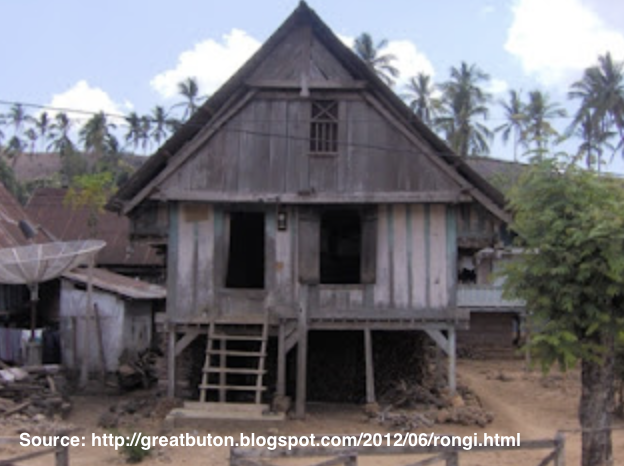Abstract
This article describes a local wisdom regarding forest conservation system called kaombo in the Rongi indigenous people in South Buton Regency, Indonesia. This is qualitative research with an ethnographic design. Data collection was carried out through in-depth interviews, participant observation, and documentation. Data analysis was carried out in a descriptive-qualitative ways using data reduction, presentation, and verification. The results of the research show that kaombo is a cultural institution that contains instrumental values to prevent forests from threats such as human overexploitation. The kaombo forest conservation system is reflected in the local knowledge of the Rongi indigenous people about forests and agricultural land use patterns. The principles of kaombo include forest sustainability, enforcement of customary sanctions for violations, and utilization of kaomboforest resources. Kaombo allows the carrying capacity of forest areas to be maintained.
References
Cheng, Jin, C., et. al. (2020). Co-existence between humans and nature: Heritage trees in China’s Yangtze River Region. Urban Forestry & Urban Greening. Doi: https://doi.org/10.1016/j.ufug.2020.126748.
Danandjaja, J. (1997). Folklor Indonesia: Ilmu Gosip, Dongeng, dan Lain-Lain. Jakarta: Pustaka Utama Grafiti.
Denzin, Norman K., et, al. (2009). Handbook of Qualitative Research. Yogyakarta: Pustaka Pelajar.
Elands, et. al. (2015). Policy interpretations and manifestation of biocultural diversity in urbanized Europe: conservation of lived biodiversity. Biodivers Conserv, 24: 3347-3366.
Friedman, L.M., (2018). Sistem Hukum: Perspektif Ilmu Sosial. Bandung: Penerbit Nusa Media.
Hruschka, Daniel J., Lende, Daniel H., Worthman, Carol M. (2005). Biocultural dialogues: Biology and culture in Psychological Anthropology. Ethos, 33: 1–19.
Jayadi, Edi Muhamad. (2020). Pengelolaan Hutan Adat Berbasis Kearifan Lokal. Mataram: Penerbit Sanabil.
Khongsdier, R. (2007). Biocultural approach: the essence of anthropological study in the 21st century. Anthropologist, 3: 39-50.
Koentjaraningrat. (2009). Pengantar Ilmu Antropologi. Jakarta: Rineka Cipta.
Loh, Jonathan & Harmon, David. (2005). A global index of biocultural diversity. Ecological Indicators, 5: 231-241.
Mustari, Tamar, Sulhan Manaf, La Ode Abdul Munafi. (2019). Pola Pemanfataan Sumber Daya Laut Berbasis Kearifan Lokal pada Masyarakat Wabula di Kabupaten Buton. Jurnal Simulacra, Vol. 2, No.1, (53-63).
Munafi, La Ode Abdul, et al. (2020). Pebula: Kearifan Lokal Masyarakat Buton dalam Pencegahan dan Penindakan Korupsi. Jurnal Etnosia Vol. 5, Issue 1, Juni 2020 (67-78).
Maffi, L. (2005). Linguistic, cultural, and biological diversity. Annual Review Anthropology, 34:599–617.
Maffi, L. & Woodley, E. (eds). (2010). Biocultural Diversity Conservation, a Global Sourcebook. London: Earthscan.
Mardan, Nurdin, Sayaril Ramadhan. (2022). Pengelolaan hutan berbasis kearifan lokal masyarakat Buton Selatan, dalam Administratio, Jurnal Ilmiah Ilmu Administrasi Negara Universitas Dayanu Ikhsanuddin, 11(1):75-83.
Malim, Dinna Dayana La Ode, (2022). Nambo Wabula: Menilik Model Pengaturan Pemanfaatan Hak Ulayat Laut pada Masyarakat Hukum Ada Wabula di Kabupaten Buton, dalam La Ode Abdul Munafi (ed): Buton dalam Perspektif Sejarah, Warisan Budaya, dan Perubahan Sosial. Kendari: UHO Press (111-128).
Pretty, J, et. al. (2009). The intersections of biological diversity and cultural diversity: towards integration. Conserv Soc, 9:100–112.
Risnawati, Wa Ode Sifatu, La Janu. Kearifan Lokal Kaombo Hamota (Kaombo) di Desa Burangasi Kecamatan Lapandewa, Kabupaten Buton Selatan, dalam Etnoreflika, Jurnal Sosial dan Budaya, 8(1):12-21.
Stepp, J. R., et. al. (2004). Development of a GIS for global biocultural diversity, Policy Matters, 13:267–270.
Silo, A., & Ismail, A. (2022). Revitalizing governance based on local wisdom in Papua. ETNOSIA : Jurnal Etnografi Indonesia, 7(1), 42 - 50. https://doi.org/10.31947/etnosia.v7i1.20124
Sulistianingsih, E., Hijjang, P., & Busthanul, N. (2022). Local wisdom of To Cerekang customary law community in preservation of natural resources. ETNOSIA: Jurnal Etnografi Indonesia, 7(1), 1 - 14. https://doi.org/10.31947/etnosia.v7i1.14203
Susanto, Hary. (1987). Mitos Menurut Pemikiran Mircea Eliade. Yogyakarta: Kanisius.
Tenri, Andi, et al. (2019). Kaombo: Preservation of coastal environment based on local wisdom in Siompu Island, South Buton Regency, in Indian Journal of Public Health Research & Development, 10(11): 1778-1782.
UNESCO. (2007). Links between Biological and Cultural and Cultural Diversity. Paris: Report of the International Workshop.
Wild & McLeod, C. (2008). Sacred Natural Sites Guidelines for Protected Area Managers. IUCN, Gland.

This work is licensed under a Creative Commons Attribution-NonCommercial 4.0 International License.
Copyright (c) 2022 ETNOSIA : Jurnal Etnografi Indonesia





